Corinth Canal; All the history! Part I
Hello Steem people 😀!!!
The ones of you that took the time to read my post about Isthmia and liked it, thank you so much!!!!
Whoever hasn't read it yet, should really take the time and do so, it is really worth it ❤ ❤ ❤ !!!
So I promised- and I always like to be true to my promises- in that post, that I would come back with a post about the Canal of Corinth, the history of it and my sentimental bond with this beautiful place of not just the Peloponnese and Greece but the whole Mediterranean in general!!!
This will come in two parts, since it is a long one and I wouldn't want to make you feel sleepy now 😊!
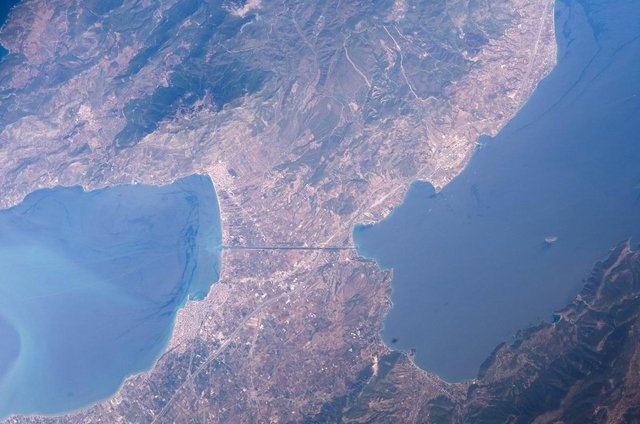
So starting right away!!! The Corinth Canal has been of extreme importance for the Greek Chamber of Commerce and it is placed next to Strait of Gibraltar, Suez and Panama Canals one of the most spectacular and important, strategically spots on the planet!
The Isthmus of Corinth, as it is also called, is a narrow strip of land that unites Central Greece with the Peloponnese, while the canal that has been opened to it joins the Saronic Gulf with the Corinthian Gulf.
It is about 6 km long and the narrowest point is where the Corinth canal was built (1880-1893).
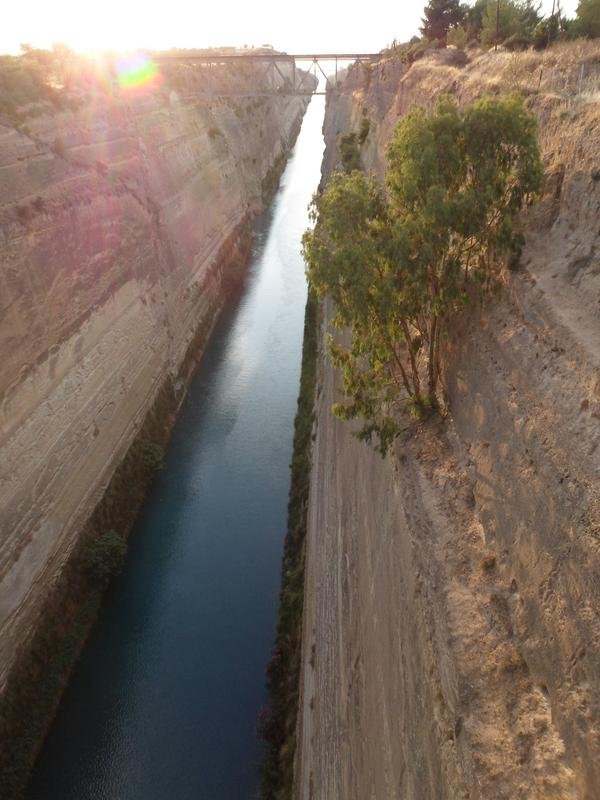
It was a strategic point and for that reason a wall was built already in the ancient times (late 5th century BC), which had been preserved even to the Byzantines (Examilion).
History Class
The islet of Corinth was known in the ancient world as the landmark that separated the Peloponnese from the rest of mainland Greece.
In the 1st century AD geographer Strabo pointed out a column in the Isthmus of Corinth, which brought two inscriptions.
One to the East, Megara of Attica, which said: "The Peloponnese, the other one" and the other towards the West, to the Peloponnese: "in the Peloponnese, Oikon".
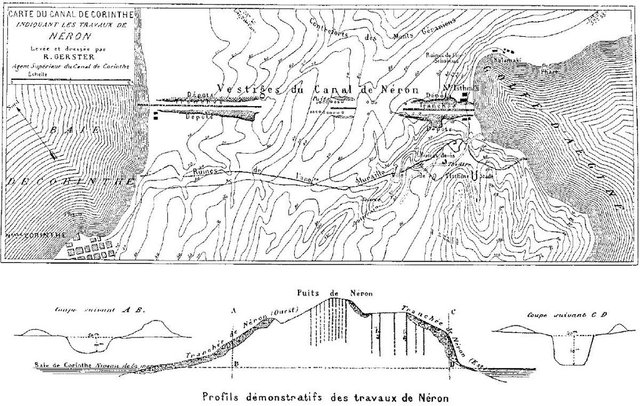
Plutarch handed down the construction of this column to the hero of Attica Theseus on his way to Athens. The idea of a shortcut that sailing boats do not complicate the Peloponnese has long been considered by the Ancient Greeks.
Did Pythia's oracle stop the work?
The first attempt to open a canal was made by the tyrant Periandros in the 7th century BC.
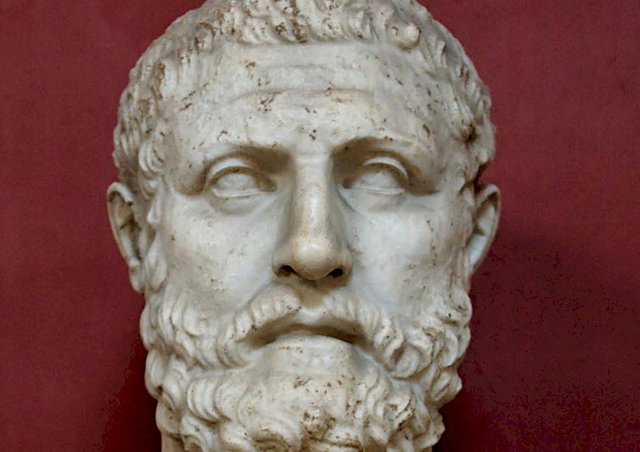
However, he quickly abandoned his plan because of ... the wrath of Gods.
Indeed, the fear of divine "retaliation" was based on the Pythian oracle saying:
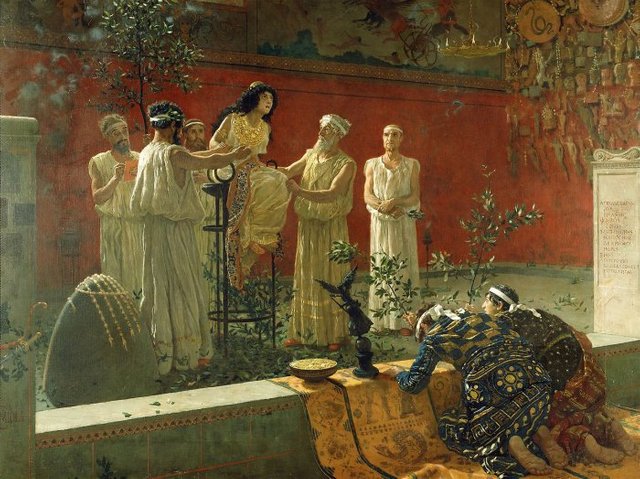
"You are not a tower and do not shoot. The beast was born and the eagle was born. That is, "You must neither fortify nor fortify it. Why Zeus made an island where he judged right. «So the slaves and the animals continued to pull the ships into the "diolkos" which became the most popular method to pass the goods from one side of the Isthmus to the other.
- Thus, slaves and animals continued to pull the ships into the "dulcano" which became the most popular method to pass the goods from one side of the Isthmus to the other.
- But the basic reason that forced Periandros to abandon his plan was not the divine wrath itself, but the enormous technical difficulties of executing the project and the economic interests of Corinth, wishing to maintain its privileged position as a "key holder" of the Mediterranean transit trade.
After all, the continuation of the "passage" of the ships through the "diolkos" did not present any particular problems in Corinth because the ships of the time were of small dimensions and the muscular strength of slaves and animals was sufficient for this purpose!!
Here is a video where is the representation of how the ships were crossing Diolkos!!!! Is quite ASTONISHING!!!!!
Remnants of Diolkos are still present next to the modern canal.
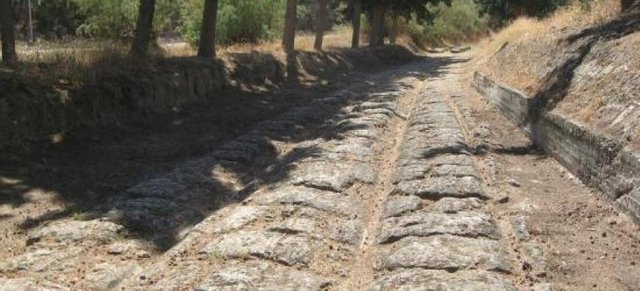
Greek activists are pushing for greater efforts by the Greek government to protect the archaeological site of "Diolkos".
When the Romans took control of Greece, several different solutions were attempted.
Julius Caesar predicted the benefits of a link to his newly-founded Corinth as Colonia Laus Iulia Corinthiensis. On the reign of Tiberius engineers tried to dig a canal but failed because of lack of modern equipment.
Instead, they constructed an Archaio-Egyptian mechanism: the ships were drifting along the isthmus on tree trunks, as the Egyptians had rolled pieces of granite to make their pyramids.
It was commissioned in 32 AD. In 67 AD. , The Roman Philistine Emperor Nero ordered 6,000 slaves to dig a canal with shovels.
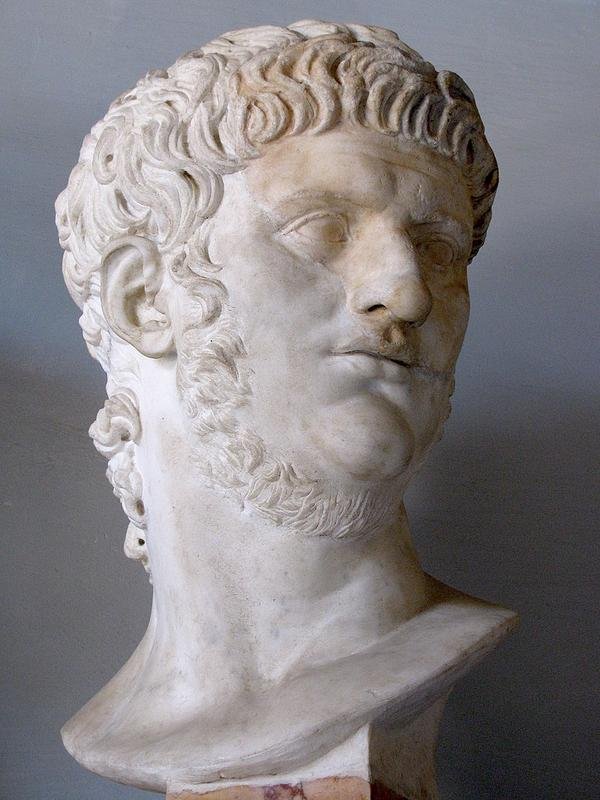
Historian Josephus Flavius writes that the 6,000 slaves were Jewish pirates captured by Vespasian during the Jewish wars.
According to Pliny the Elder, the project proceeded in four stages (about 700 meters). The following year, Nero died and his successor Galva abandoned the project as a very expensive one.
Bellow you can see the protomi of Nero, as you enter the Corinth Canal from the Corinthian Gulf! That's exactly the point, where his project stopped!
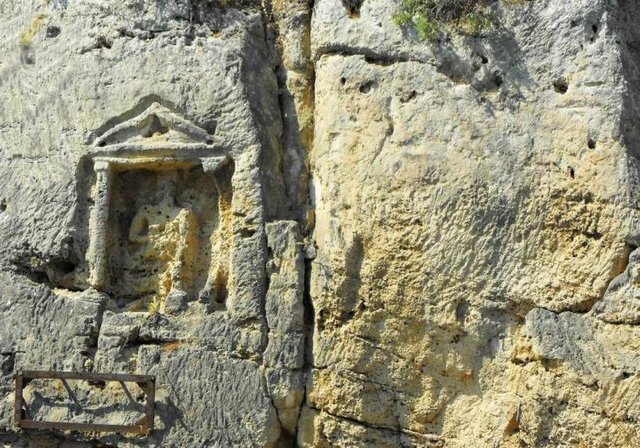
Kapodistrias abandoned the great project due to cost!
The first attempts to open the Corinth Canal in the recent history were made by Ioannis Kapodistrias. The newly-established Greek state was unable to cope with the 40 million gold francs needed to complete the project. So it was abandoned, once more!!!
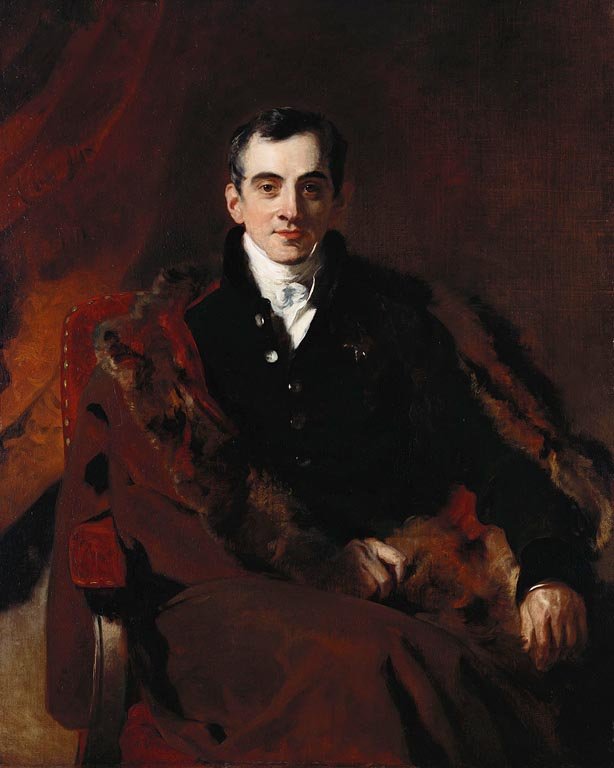
Then, with the industrial revolution and the development of trade in the Mediterranean, the opening of the Corinth Canal was imperative. This particular project would provide two important advantages in international shipping and international trade: Security and Economy.
In the end, in 1869, the Zaimis Government decided and voted first on the law "on the excavation of the Isthmus"!!!!
And that, I will leave it for my next post 😉!!! I send you all many kisses, I hope you really enjoyed it and.....
Until next time, stay tuned and keep smiling my wonderful beautiful people😘 😘 😘 ❤ ❤ ❤ !!!
Photo Credits:
Sources:
https://en.wikipedia.org/wiki/Corinth_Canal
https://en.wikipedia.org/wiki/Diolkos
Long sought after project from what I can read here! It was impressive to see in person last summer.
Thanks for the great education and to-the-point videos underlining different aspect of its construction. Namaste :)
Thank you @eric-boucher for your beautiful comment 😀!!!
Tomorrow Part II will be up! It will be really...breathtaking!!!
Namaste 😚!!!!
Very interesting! Piece of history about a part of the world I basically know very little about. Interesting that they would move ships like that, so long ago... I guess "manpower" was cheap back then.
Yes that's a polite way of putting it @denmarkguy, cheap "manpower" ☺!
Such a great post! Too many new information for me! Good job, really :)
Btw. Nice to meet amazing Theo´s sister :)
Oh thank you @liltammy ❤ ❤ ❤ !!!
Πολύ ωραίο άρθρο! Μπράβο!
Δεν ξέρω αν έχεις πληροφορίες για ένα πολύ γνωστό Ελληνικό ρητό που έχει βγει επειδή οι εργάτες προτιμούσαν να σέρνουν τα πλοία για μέρες παρά να ανοιχθεί ο ισθμός.
Αν έχεις πληροφορίες θα ήταν ενδιαφέρον ένα τέτοιο άρθρο.
Ναι ξέρω το ρητό στο οποίο αναφέρεσαι Νίκο, ίσως κάνω κάτι καλό με αυτό στο μέλλον 😉 !!!
Ευχαριστώ για την ιδέα @nikoleondas 😘 !!!
Fun! I look forward to seeing soon!!!
You will love it here girl, I'll make sure 😘 😘 😘 !!!
Oh Wow! I did not know that it all started so long ago!
Ωραία δημοσίευση Αλίνα :) Θα περιμένω και το επόμενο μέρος και όταν ξαναεπισκεφθώ την περιοχή θα κάνω σε όλους την έξυπνη 😂😂😂
Thank you @katerinarramm😀 !!!
Yes it did, it's so much history really, that we have no idea!!
Χαχαχα, όταν επισκεφτείς την περιοχή θα είσαι φιλοξενούμενη μου 😘 ❤!!!!
Καλημέρα και καλή εβδομάδα Κατερίνα μου 😀!!!
Αυτη ειναι αλφαδια!!!! :D
Σε ευχαριστώ πολύ @inferisgr 😀!!!
καλημερα !!!!@alinak15 ...εχουμε μεγαλη ιστορια!!!φοβερο πολιτισμο,ωραιο το υλικο του στο συνολο!!!
Καλημέρα Αγγελική μου, ναι έχουμε!!! Είναι απίστευτο πόσο μεγάλη είναι η ιστορία μας!
Σε ευχαριστώ πολύ 😀!!!!!
After watching that first video, I feel that your ancestors might have enslaved my ancestors and so........
I demand reparations! :-)
Oh my, you will have to deal with Greek bureaucracy then and I am most certain you won't like it lol!
a really nice and well-written post once again @alinak15 For those that haven't visited the sight yet, I could only say it's a truly magnificent piece of nature that looks even better than the pictures show.
Αναμενω στο μελλον bungee-jumping απο εκει μιας και είναι εξίσου γνωστό για αυτή του τη δραστηριοτητα :p
Thank you @unshakeable for your kind comment 😀!!
Just stay put.....bungee-jumping is on the way 😉!!!
waiting for a good collection of photos then..!